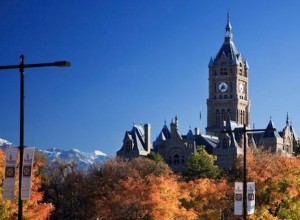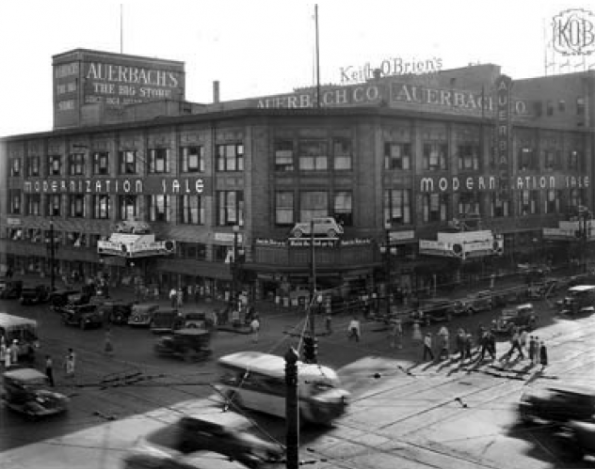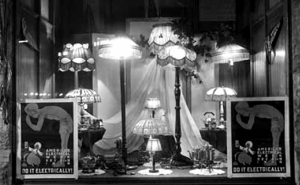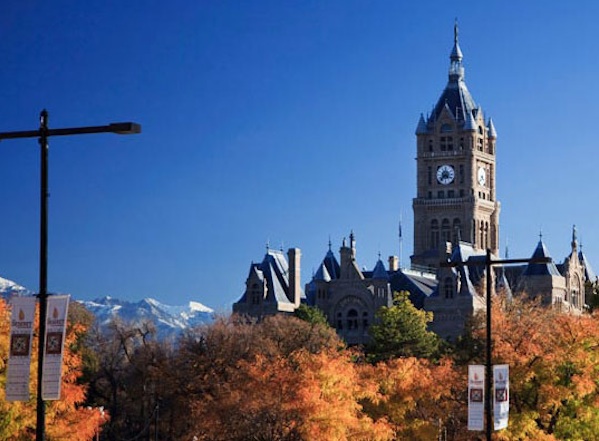 While Salt Lake City area businesses are struggling, the city government continues to increase budgets for pet projects.
While Salt Lake City area businesses are struggling, the city government continues to increase budgets for pet projects.
Grandiose ideas are part of the great cities of the world. These big ideas that have attracted voters to elect liberal Democrats into the mayor’s office for the past 30 years. But while liberals can have great plans such as a hands-on science center like The Leonardo, the Broadway-style theater and, of course, Mayor Becker’s and Rocky’s favorite: bike paths — nobody seems to be complaining. Everybody enjoys a nice bike lane and nice city amenities. In fact, Becker will likely sail into re-election with the only concern being how to make the city government operate more like a fairy godmother.
But herein lies the rub: government isn’t a fairy godmother. Government’s job is to attend to the needs of the governed and then get out of the way for private business and the free market to work its magic. This occurs when small businesses create jobs by finding better ways of doing things. For the past 30 years there have been a series of blunders by Salt Lake City mayors that have wreaked havoc on the small business owners of Main Street.

Recent Downtown Salt Lake City History of Master Plan Effectiveness
In 1976 the Salt Lake City Redevelopment Agency and the Planning Department needed to decide where to build a second downtown mall. The ZCMI Center had already proven to be just the bait needed to lure shoppers back to downtown away from the growing suburbs. Meanwhile the businesses that weren’t in the ZCMI Center began clamoring for the city to provide parking for their companies. But the reason they needed this parking resulted from a series of very bad decisions by city government. Let us examine the history that seems to have been forgotten by the current administration.
Throughout the first half of the 20th century, downtown business owners had a very strong coalition called the Downtown Merchants Association. This group was led by Fred Auerbach. As a fourth-generation leader of Auerbach’s Department Store, Fred was very concerned about the changes he saw occurring to downtown where his family business had operated for the past 117 years.
Auerbach’s had grown up with Salt Lake City; started by two brothers who came to Salt Lake City with the gold and silver rush to provide supplies to prospectors in 1864.

The Auerbach brothers had a knack for knowing not only what customers wanted to buy, but also how to present their merchandise in a way that enticed customers’ desires to buy. For years they would run huge ads in the Salt Lake Tribune and the Deseret News featuring hand-drawn illustrations of all of their latest and greatest products. Their store windows were also famous for their elegance.
Auerbach’s grew and developed into a household name and if anyone knew Salt Lake, they knew about its famous department store, Auerbach’s.
Auerbach’s resided on the corner of State Street and 300 South. In its finest days the store featured three shopping levels and eventually a rising tower.
However, Fred Auerbach realized there were big changes happening in Salt Lake City that could seriously jeopardize his family business. City leaders weren’t addressing the downtown merchants concerns and instead attending to their own pet projects, visions and initiatives. The first big blow occurred with the downtown “beautification project.”
In the late 1960s, downtown businesses began to see fewer shoppers. This was a part of a growing national trend of suburban sprawl and the popularity of suburban-style shopping malls.
As a result of the decline of tax revenue, the city had difficulty investing in infrastructure. Downtown sidewalks were falling into a state of disrepair. To combat these problems the Second Century Master Plan was adopted with little input from downtown business owners.
The Second Century Plan was adopted after the Mayor’s office decided to bring in some outside consultants from Chicago, to tell them how best to revitalize the city center. The solution that the consultants recommended were to widen the sidewalks and create “grand pedestrian walkways” on Main Street consisting of granite slabs, which would encourage suburbanites to return to downtown. If for nothing else but to enjoy the wide sidewalks? In hindsight the logic certainly seemed flawed.
One of several problems with this idea is that it would come completely at the expense of the small businesses owners. First, the business owners would lose 50 percent of their parking capacity, because the wide sidewalks demanded that all parking go from angled to parallel. Second, the majority of the burden of the project was placed on the business owners based on the amount of frontage each business owned, resulting in a huge levy. While the planners were neglecting the input by the business owners the worst of their problems were yet to come.
The Aftermath and Unexpected Consequences
The unforeseen consequences of construction proved to be the most harmful for the business owners. Business owners literally had piles of dirt in front of their businesses during the entire year of construction. These piles and construction delays made it next to impossible for customers to even access their stores.
The combination of the taxes, construction and loss of customers resulted in fatalities for several long-time businesses including Wolf’s Ranchwear and Broadway Music.
Business owners were not happy even after the project was completed. Left with empty, wide sidewalks and less parking, the outcome the city hoped for was certainly nonexistent.
So as this chapter began, the business owners needed additional parking. Ted Wilson’s plan was to build a parking structure, with a 600,000-square foot shopping mall attached, a plan which manifested as the Crossroads Mall. Again the unforeseen consequences resulted in tragedy for small business owners. Once shoppers were in the malls very few found any reason to venture outside of the malls and patronize the much more difficult to access shopping areas like Auerbach’s or Keith O’Brien or the Paris Company.
The final result was, the business owners who weren’t in either of the two malls on Main Street realized further failure. Auerbach’s closed its doors in 1979, after 114 years in business. Besides Auerbach’s, nearly 40 more businesses closed their doors between 1976 and 1981 including Pinbrokes, Baker Shoes, Keith O’Brien, Paris Company, the Owl Restaurant, Arendt Jewelery, and five other jewelers located on Main Street. JC Penney also closed. All of these businesses were, in effect, traded for the stores that resided in the ZCMI Center and the Crossroads Mall, which were nearly all corporate chain stores. While the city did gain tax revenue, the loss of hundreds of years of collective history, local commerce and culture was not fair trade. Main Street was traded for Wall Street. Did the grandiose ideas of the liberal mayors pay off? I believe the demolition of the Crossroads Mall and ZCMI Center just thirty years later provide the answer to that question.


